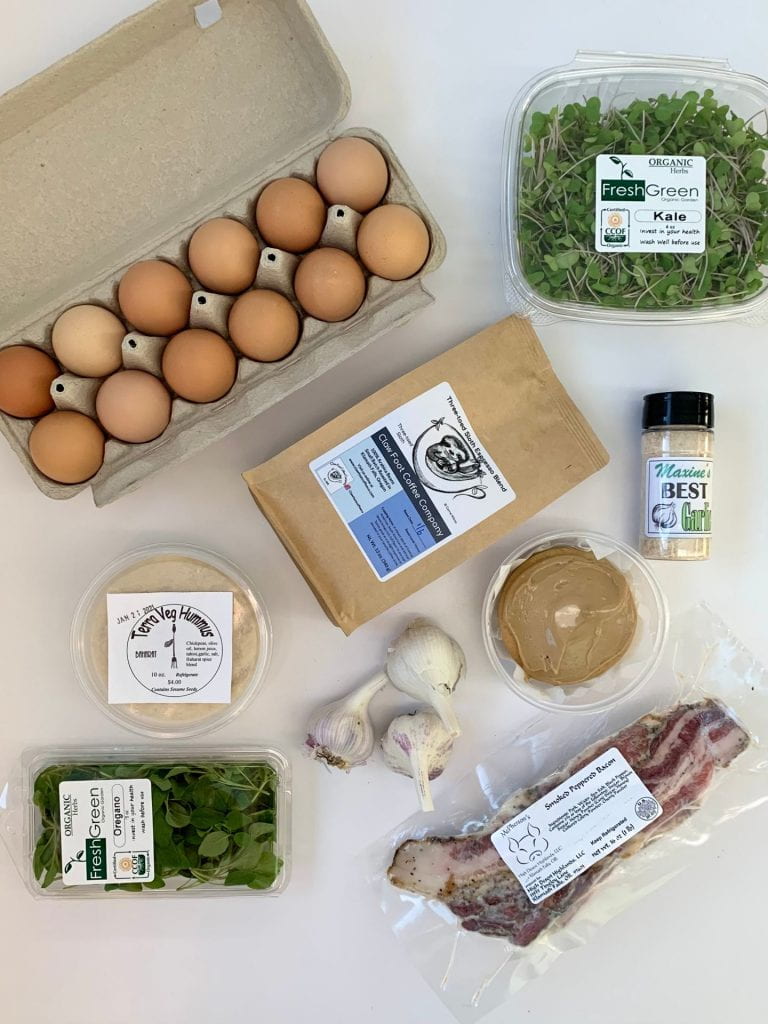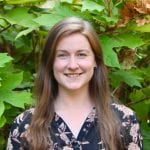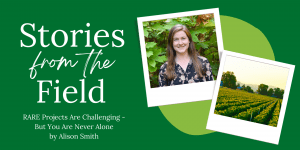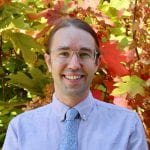By Alison Smith, Rural Economic Recovery & Resiliency Specialist, South Central Oregon Economic Development District (SCOEDD)
It is year two of my service with the South Central Oregon Economic Development District (SCOEDD) in Klamath and Lake Counties. Over the last year, I completed a COVID-19 Economic Needs Assessment, participated in various community outreach and engagement initiatives, attended important meetings, got to know the community, and heard about what the community wants to get done. It has been and continues to be an incredible experience, and I am so grateful.

With that said, it is not always seamless or flawless, and there are moments that communities can challenge you to think outside the box or strategically figure out your next steps. I am lucky enough to be working on a project that supports our local food hub here in Klamath Falls – Klamath Farmers Online Marketplace (KFOM). It is a fantastic organization that connects the Klamath Basin community to local food. The marketplace sells fresh produce, meat, eggs, bread, honey, and other locally grown, raised, and produced food. Importantly, it also supports the local economy. Last year, SCOEDD assisted KFOM’s co-founders by funding the development of a local food brand called Klamath Grown. The goals of Klamath Grown are to (1) increase community awareness and pride in locally grown and produced food; (2) develop market and business development opportunities for local producers and retailers; and (3) expand the services of KFOM, the existing local food hub. With the supply chain challenges we are all facing right now, local food could potentially be a way to mitigate the increased prices and shortages from our grocery stores. In addition, Klamath Grown could be a way to provide a space for local producers to come together and learn from one another and others in the community. The past year has been very tough for community members because of the drought, and a producer network backed behind a local food brand could help support the agricultural economy here when tough times continue.
This brand is still in its early forms, and we are continuing to figure out ways to ensure differentiation between Klamath Grown and the original marketplace, KFOM, but there has already been excellent local support. With that said, funding is hard to come by – both KFOM and Klamath Grown need people and money. Local organizations and individuals applied for local food system grants, went to the County to pitch KFOM ideas and thoughts, and discussed other fundraising campaigns. SCOEDD applied for a grant on Klamath Grown’s behalf, but we have received no luck yet. Additionally, since we are in such early project stages and determining the best way to organize some of these efforts, some key stakeholders, leaders, and decision-makers are uncertain or unclear about the return on investment. It is easy to become discouraged and feel defeated; a year later, we are not too far from where we started, and at this point, our enthusiasm is dwindling.
Everywhere, but particularly rural areas, can have many challenges around capacity and funding. There are a lot of people doing a lot of work, and they want to do it. Helping their communities and encouraging economic development in their home is vital. But, this can lead to intense burnout and discouragement. With KFOM and Klamath Grown work, it is hard to ask farmers and producers who work 80+ hour weeks, especially in the summer, to think about the various fundraising techniques to get an idea off the ground, sit down and write a grant, or navigate the world of grants in general. Many organizations come together and try to help but may experience similarities – people are swamped, or there is not a person at the moment who has specific expertise.
It is easy to focus on the things holding you back. However, when I feel discouraged about a project, I like to think of RARE’s emphasis on a community’s assets. At the beginning of service, we are trained on Strategic Doing – an implementation approach to stragetic planning – and other ways to engage the community. One thing is for sure: dwelling on what you do not have is likely going to keep you from progressing. While the RARE program cannot solve problems like these directly, it provides terrific resources to help you better understand what assets you have in your community, what is in your control, and how to best lean on the community members that know this work best. On top of those resources, RARE also has a great network – RARE staff, current RARE members, and RARE alumni are all there to assist when needed. I am working on food systems work because it ties directly with economic development in the region, which I am primarily working on. Therefore, I am not part of RARE’s food systems cohort. With that said, there is one! At any point, I can sit in on their meetings, discuss strategic ways of thinking about projects like this, and ask my many questions.
Many will find that implementing your RARE projects from start to finish is not the easiest thing in the world. Challenges, issues, and other obstacles may show up throughout the process. RARE helps you understand that this is typical, and you should lean into your support network and additional expertise in your community. While I am still investigating ways to get KFOM and Klamath Grown a staff member or some extra funds, I am glad that my RARE network and other enthusiastic SCOEDD partners in the community are assisting during this process. Going at it alone and only dwelling on the challenges will likely be the easiest option, but it is in no way the best option. I am looking forward to continue navigating these challenges and utilizing my community’s assets to move this project, and others, forward.
 About the author, Alison Smith: Alison Smith spent last year in Klamath Falls, Oregon, working with the South Central Oregon Economic Development District (SCOEDD) to identify and organize economic recovery, mitigation, and resiliency initiatives. She is continuing her service this year at SCOEDD to build upon the work and is preparing to implement opportunities and actions derived from the district’s needs assessment. Before RARE AmeriCorps, she spent five years working in the business consulting industry, assisting US Government agencies with human capital projects, such as change management, human-centered design, and training and facilitation efforts. She is passionate about the triple bottom line – social, economic, and environmental success – and helping others prepare for and overcome change. In her free time, she can be found hiking, soaking up the sunshine and outdoors, trying new food, and catching up on her favorite TV shows and books.
About the author, Alison Smith: Alison Smith spent last year in Klamath Falls, Oregon, working with the South Central Oregon Economic Development District (SCOEDD) to identify and organize economic recovery, mitigation, and resiliency initiatives. She is continuing her service this year at SCOEDD to build upon the work and is preparing to implement opportunities and actions derived from the district’s needs assessment. Before RARE AmeriCorps, she spent five years working in the business consulting industry, assisting US Government agencies with human capital projects, such as change management, human-centered design, and training and facilitation efforts. She is passionate about the triple bottom line – social, economic, and environmental success – and helping others prepare for and overcome change. In her free time, she can be found hiking, soaking up the sunshine and outdoors, trying new food, and catching up on her favorite TV shows and books.
Interested in gaining community and economic development experience of your own? Are you looking for a life changing experience in rural Oregon? Learn more about serving with the RARE AmeriCorps Program. Applications for Year 29 (2022-23) due April 25, 2022 by 5pm PDT.



